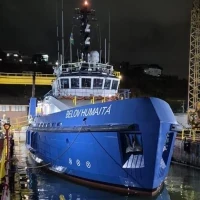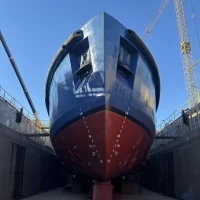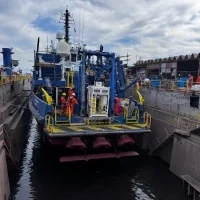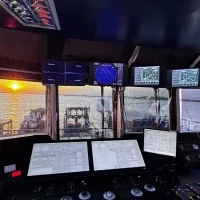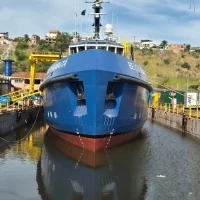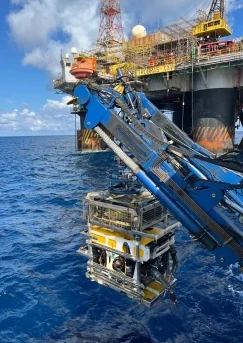Adapted to English from an article originally published on the Belov Group website.
The vessel Belov Humaitá completed its second dry docking this Friday (7), at the São José Shipyard, in São Gonçalo, RJ. The updates, which range from a specialized paint job to the installation of new features, will provide more crew comfort, better vehicle performance, and increased operational safety.
The installation of the Norwegian-made patented keel component, the Hull Vane, aimed to improve performance during navigation, making the vessel more stable. This component is part of the lower structure of the boat, and its design has a direct relationship with resistance and speed. This will result in a reduction in fuel consumption and CO2 emissions, which can vary from 10% to 16% depending on the speed achieved, and a gain in efficiency that can reach 25%.
The hull received a new coating of Self-Polishing Copolymer (SPC) paint, which has greater resistance to fouling than conventional anti-fouling paints. This coating influences navigation performance because it reduces the demand for cleaning. The water intake structures, thruster tunnels, and the waterjet also received a finish with specialized paint.
One of the new features is the launch system for the diving bell, which fully submerges while fixed to the A-frame, without using the steel cable. By cutting the transversal "swing" of the bell during projection, the launch becomes safer than conventional systems. The other novelty was the replacement of the positioning system with a Kongsberg system. The change aims for more efficiency and user proximity, not only because of the manufacturer's market leadership but also due to the officers' familiarity with the support, which ensures greater precision and reliability in offshore operations.
Awarded "The Best Work Boat World" in the OSV-DSV category in 2020, the Belov Humaitá, like its twin Belov Amaralina, is the first diesel-electric vessel of its class in Brazil. Since it was built and christened at the Belov Shipyard, it has operated exclusively on Petrobras projects. Its competitive advantage lies in significant fuel savings compared to other DSVs on the market.
Vessels like this spend a considerable amount of time in DP2 mode. For this reason, three waterjets, three bow thrusters, and diesel-electric propulsion with four generators were installed on the Belov Humaitá, allowing for reserve generators while the vehicle is on standby mode near an oil platform. The entire docking process lasted 32 days.

 BR
BR
 EN
EN
 ES
ES
